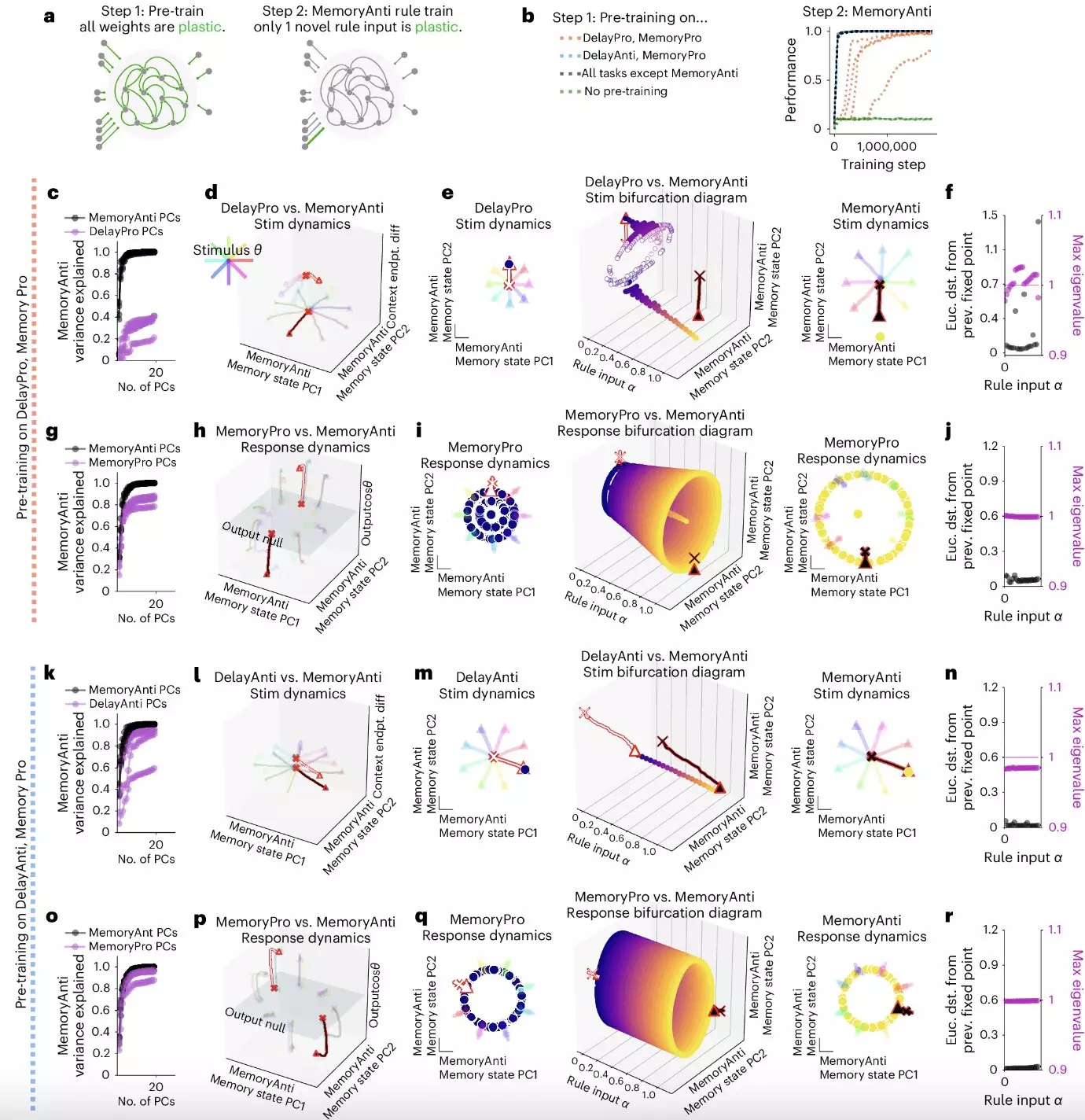Cognitive flexibility, a critical human capability, enables individuals to rapidly switch between different thoughts and mental concepts. This ability supports multi-tasking, skill acquisition, and adaptation to new situations. While artificial intelligence (AI) systems have made significant advancements, they still lack the cognitive flexibility displayed by humans. Understanding how biological neural circuits support cognitive flexibility can offer valuable insights for developing more flexible AI systems.
Recent studies have focused on neural computations using artificial neural networks. While most networks were trained for specific tasks individually, a research group in 2019 trained a single network to perform 20 related tasks. Their work aimed to explore how neural networks can perform modular computations to tackle various tasks effectively.
Researchers at Stanford University delved into the mechanisms underlying the computations of recurrently connected artificial neural networks. They identified a computational substrate termed “dynamical motifs” that enables modular computations. Dynamical motifs are patterns of neural activity that implement specific computations through dynamics like attractors, decision boundaries, and rotations. These motifs were found to be crucial for the network’s ability to perform modular computations.
Analyses revealed that in convolutional neural networks, dynamical motifs are implemented by clusters of units with specific activation functions. Lesions to these units negatively impacted the network’s ability to perform modular computations. The researchers observed that motifs were reconfigured for fast transfer learning after an initial learning phase, highlighting their importance in computational processes.
The study establishes dynamical motifs as a fundamental unit of compositional computation, bridging the gap between individual neurons and the network as a whole. As whole-brain studies continue to explore specialized neural systems, the dynamical motif framework will guide inquiries about specialization and generalization. The findings of this research have the potential to shape future studies in neuroscience and computer science, enhancing our understanding of cognitive flexibility and informing the development of flexible AI systems.
The investigation into dynamical motifs in neural networks sheds light on the mechanisms that enable these networks to perform modular computations. By identifying and understanding these patterns of neural activity, researchers are paving the way for more flexible and adaptive artificial intelligence systems. This research underscores the importance of studying neural processes to enhance cognitive flexibility and advance the field of AI.


Leave a Reply